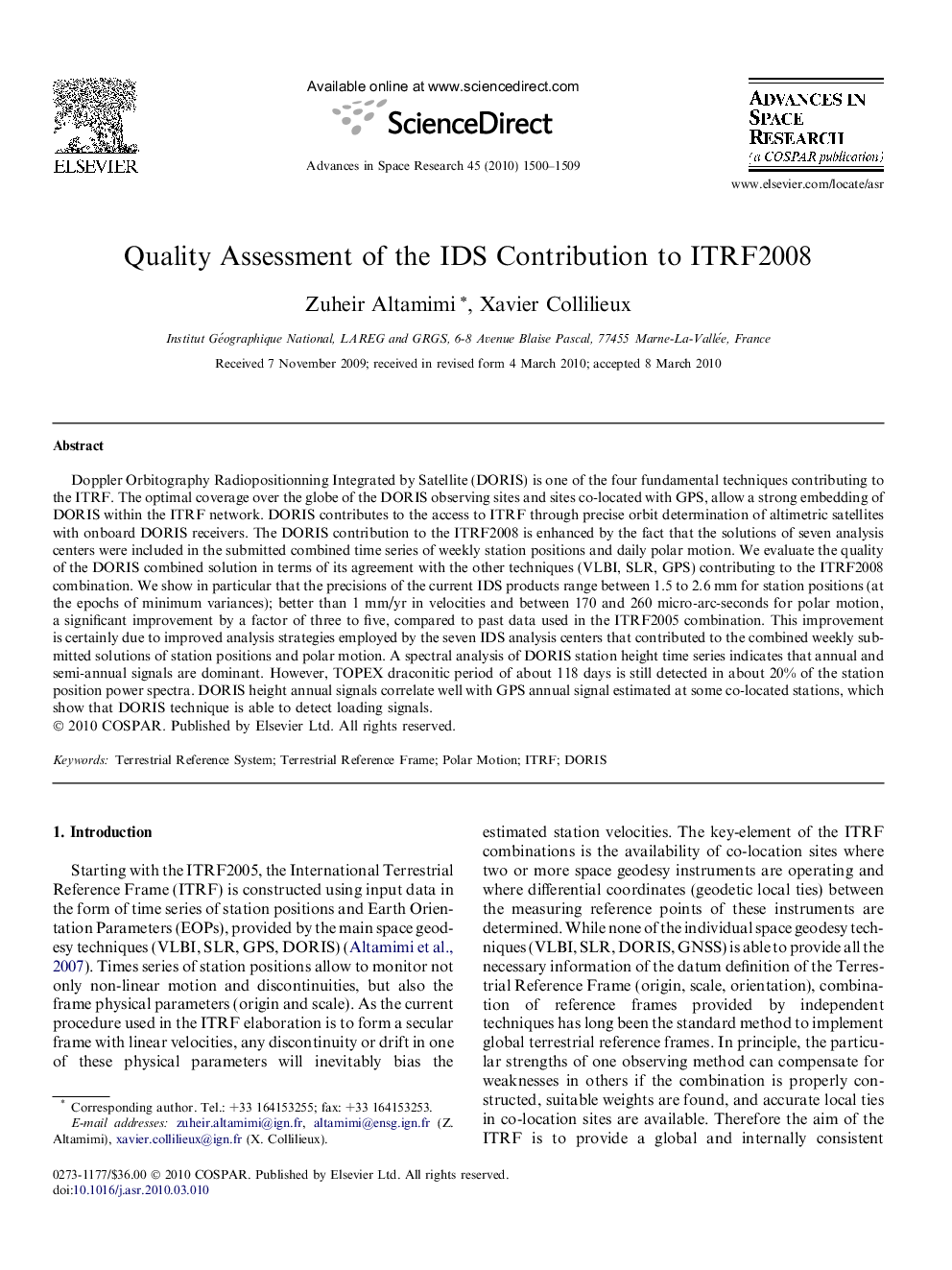| Article ID | Journal | Published Year | Pages | File Type |
|---|---|---|---|---|
| 1766256 | Advances in Space Research | 2010 | 10 Pages |
Doppler Orbitography Radiopositionning Integrated by Satellite (DORIS) is one of the four fundamental techniques contributing to the ITRF. The optimal coverage over the globe of the DORIS observing sites and sites co-located with GPS, allow a strong embedding of DORIS within the ITRF network. DORIS contributes to the access to ITRF through precise orbit determination of altimetric satellites with onboard DORIS receivers. The DORIS contribution to the ITRF2008 is enhanced by the fact that the solutions of seven analysis centers were included in the submitted combined time series of weekly station positions and daily polar motion. We evaluate the quality of the DORIS combined solution in terms of its agreement with the other techniques (VLBI, SLR, GPS) contributing to the ITRF2008 combination. We show in particular that the precisions of the current IDS products range between 1.5 to 2.6 mm for station positions (at the epochs of minimum variances); better than 1 mm/yr in velocities and between 170 and 260 micro-arc-seconds for polar motion, a significant improvement by a factor of three to five, compared to past data used in the ITRF2005 combination. This improvement is certainly due to improved analysis strategies employed by the seven IDS analysis centers that contributed to the combined weekly submitted solutions of station positions and polar motion. A spectral analysis of DORIS station height time series indicates that annual and semi-annual signals are dominant. However, TOPEX draconitic period of about 118 days is still detected in about 20% of the station position power spectra. DORIS height annual signals correlate well with GPS annual signal estimated at some co-located stations, which show that DORIS technique is able to detect loading signals.
